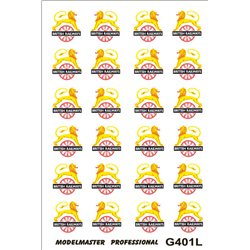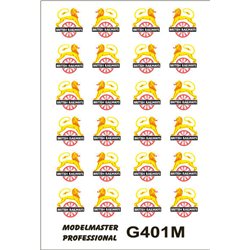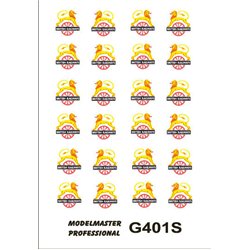Knowing which parts of your model railway locomotive to oil can be a little mystifying, especially if you no longer...
No products
Product successfully added to your shopping cart
There are 0 items in your cart. There is 1 item in your cart.
Search Tips
Christmas and New Year
We are dispatching orders every weekday apart from Christmas Day, Boxing Day and New Year's Day.
If you select next day delivery at checkout, please note deliveries are not made on public holidays or Sundays.
The shop in Sandown is open 23rd and 24th December, then closed from 25th December, reopening on 30th December.
What is the British Rail early emblem?
In 1948 the railways, buses, ports, canals and road haulage companies were nationalised and were to be operated by the newly formed British Transport Commission (BTC). Under BTC's ownership, the newly merged railway was to be known as British Railways and initially, had no logo at all! During this period, engines would simply display the wording British Railways on their tenders, styles varied as regions typically adopted the typeface of their respective pre-nationalised companies.
Eventually, British Railways came up with a corporate logo and gradually set about implemented the hotdog sausage totem for use on its stations and name boards, strangely though, this new identity never found its way onto the companies largest assets, its engines.
Engines and rolling stock were to have their own design, for this, the railway turned to designers Abram Games and Cecil Thomas, it is unclear who had the most influence on the design and continues to be a conversation of great debate, but the end result was the British Railways early emblem.
The British Railways early emblem consists of a lion standing proud over a huge railway wheel with the words British Railways in capital letters cutting through its centre. The emblem was produced with the lion facing in either direction so that both sides of a steam locomotive could have the lion facing forwards. It is called the Lion on Wheels.
The British Railways early emblem was eventually replaced by the Lion and Wheel totem in the mid-1950s. You can easily tell the difference between the two designs because the latter is a depiction of a lion holding a much smaller wheel whilst standing on a crown, whereas the early emblem has no crown and applies equal significance and proportions to both the lion and its wheel.
Click here to receive the tips weekly in your mailbox. You can unsubscribe at any time.










